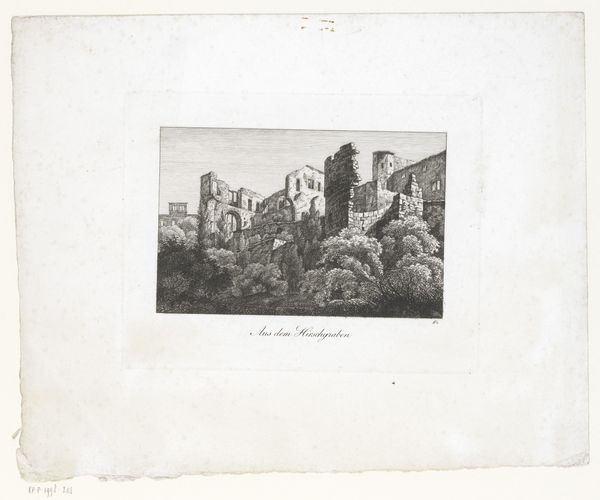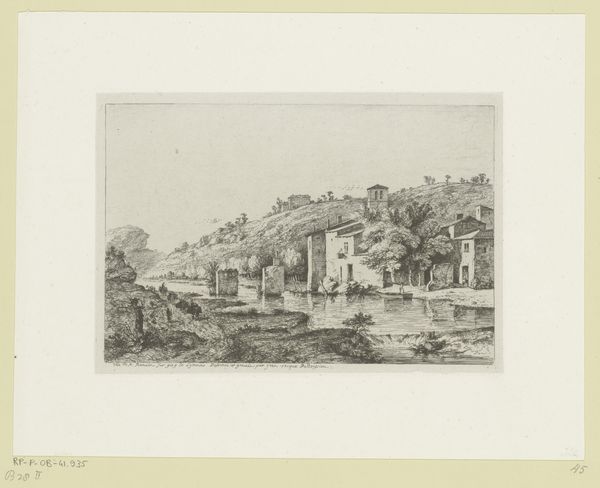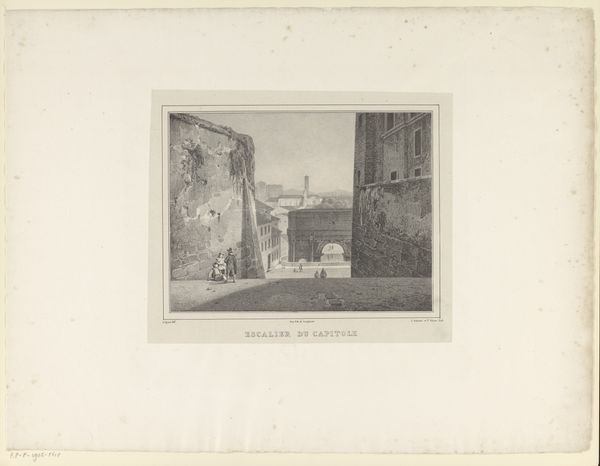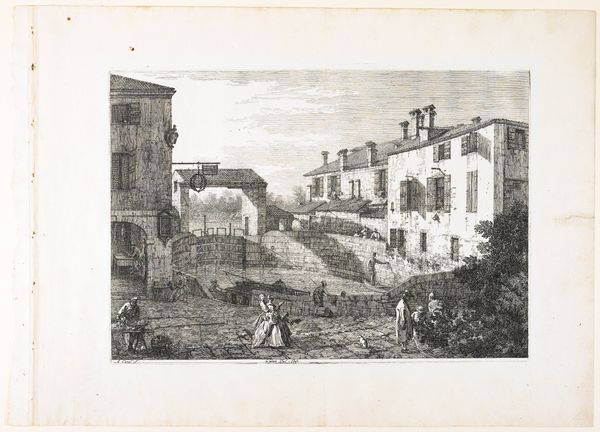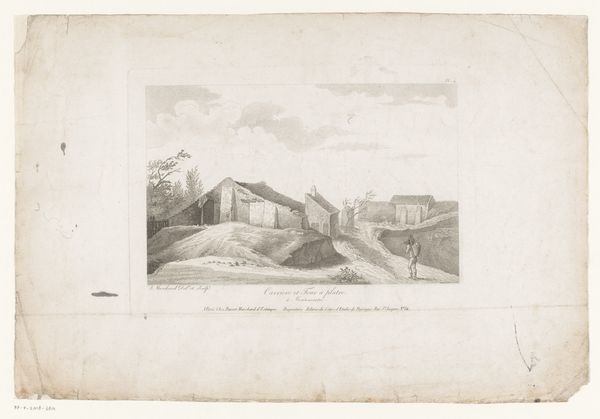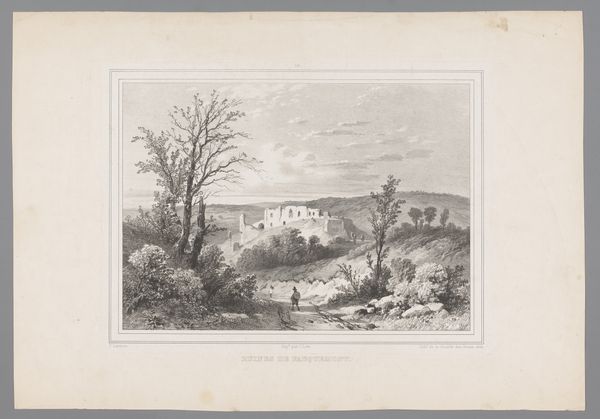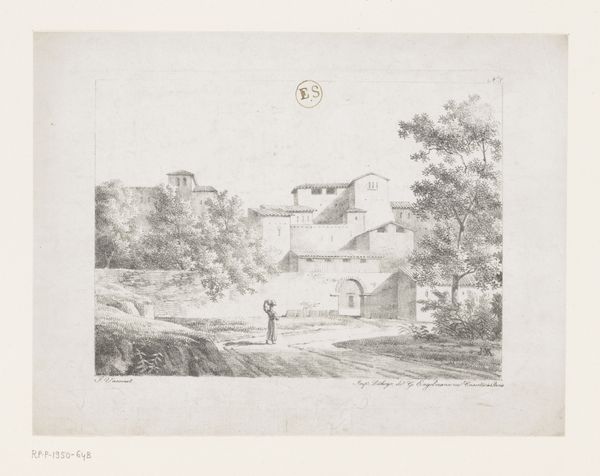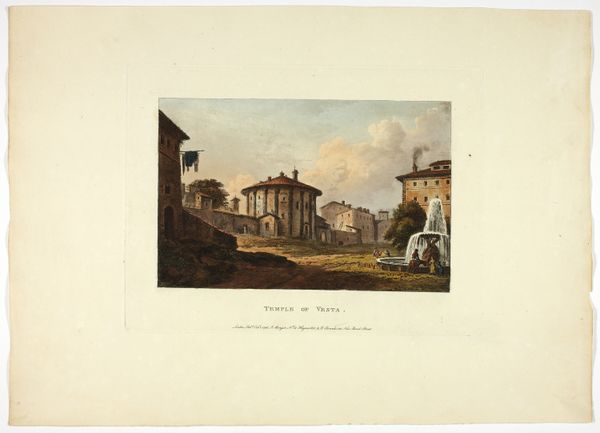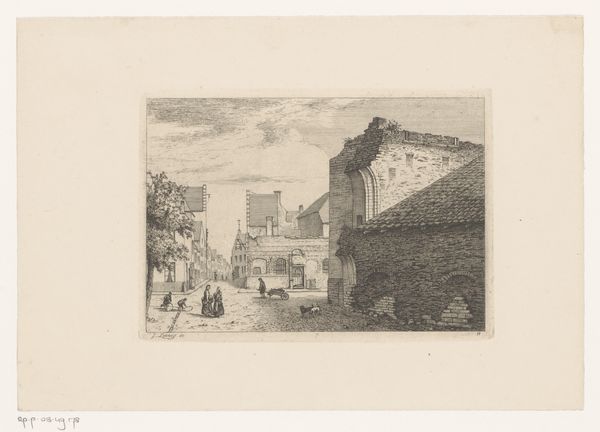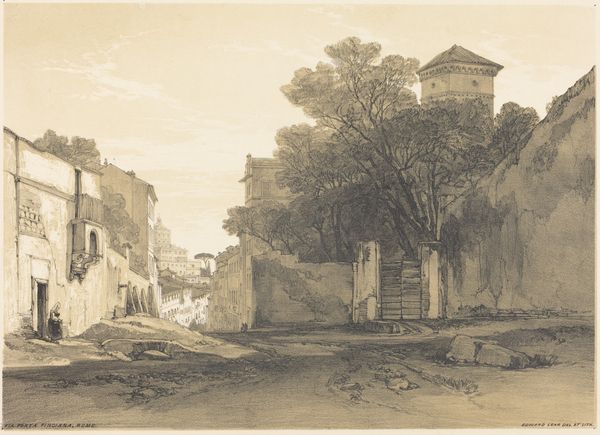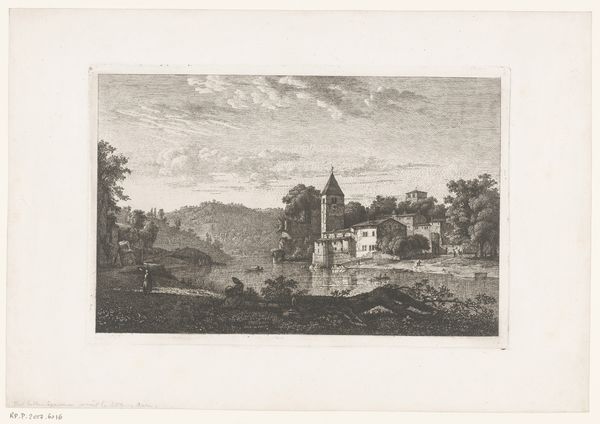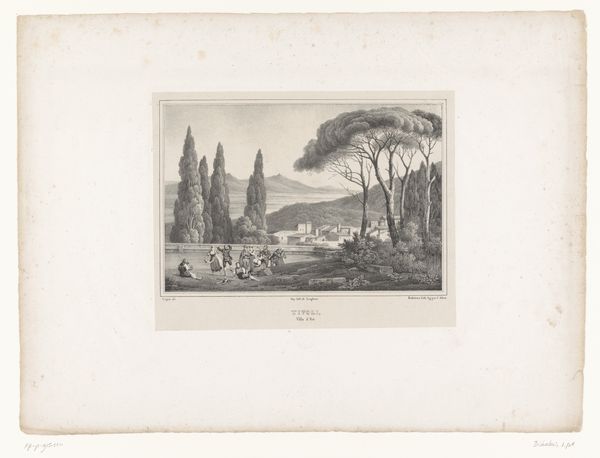
print, paper, engraving
#
neoclacissism
#
toned paper
# print
#
landscape
#
paper
#
cityscape
#
engraving
Dimensions: height 415 mm, width 554 mm
Copyright: Rijks Museum: Open Domain
Curator: Let’s take a moment to consider "Zicht op het grootseminarie te Subiaco" (View of the Grand Seminary at Subiaco). This engraving on paper, dating from between 1824 and 1826, is by Jean Paul Alaux, working in the neoclassical style. What's your first impression? Editor: There's a subdued serenity. The somber tones, the imposing yet somewhat faded architecture—it evokes a feeling of permanence mixed with inevitable decline. Curator: The image presents interesting dialogues surrounding power and faith within the context of 19th-century societal structures. Alaux renders a monumental institution in soft, almost vulnerable lines. Notice how he positions the seminary within the Italian landscape and think about who had access to knowledge and spiritual authority. It wasn’t available for many. Editor: That reminds me how architects often employ religious buildings to harness their symbolic significance, layering associations of piety, tradition, and collective aspiration onto structures. I wonder if this portrayal intends to bolster the church’s stature, or question it? What visual symbols do you observe that signal either intent? Curator: Consider the deliberate inclusion of the local people in the foreground. Their interactions with the seminary suggest a visual interplay between everyday life and institutional influence, begging us to explore how this kind of structure affected the lives of working people in the area. It is important to view this work in relation to its own time. Neoclassicism itself carries strong connotations, with its reinvigoration of the visual ideals of the classical period. Editor: The choice of figures certainly anchors the architectural grandeur to lived experience. Do the figures lead our eye? Consider the tree on the left too—it leads our eye to the impressive building looming on the hill, reinforcing its stature within the natural world. Curator: Perhaps Alaux is subtly highlighting the ongoing negotiation between established power structures and the shifting socio-political landscapes of his time. It's an intriguing point to consider when engaging with art that presents monumental subjects. Editor: It seems there’s no simple message here, but a confluence of histories, power dynamics, and the slow, inexorable march of time, all captured in ink and paper. It's a reminder that symbols carry many significations and can embody a complexity of ideas.
Comments
No comments
Be the first to comment and join the conversation on the ultimate creative platform.
